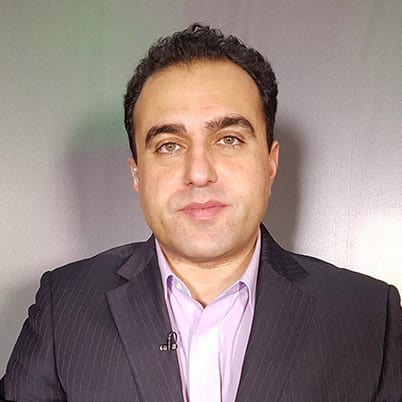As tensions between Iran and the US continue to mount, American President Donald Trump’s proposal to meet Iranian leaders appeared to be, on the face of it, a de-escalatory posture. It confirmed once again Trump’s mercurial leadership style and his apparent penchant for dealing with strong authoritarian leaders.
As it has been pointed out Trump appears to be more comfortable in the company of autocrats than democratic leaders. Indeed, his proposal to meet Iranian leaders comes on the heels of generally successful summits with the North Korean leader, Kim Yong Un, and Russian President, Vladmir Putin.
These meetings have led some to speculate that a similarly successful outcome can be achieved with Iranian leaders. But such a meeting will not happen not least because the Iranian leadership has no faith in the current US administration. But, Trump aside, there are deep-rooted structural, ideological and emotional issues which militate against a sudden diplomatic breakthrough in Iranian-US relations.
EU determined to protect companies from US sanctions on Iran
Absent genuine de-escalatory measures by the US, such as giving up on plans to stop Iranian oil exports by early November, the stage is set for a showdown. With Iran threatening to close the Strait of Hormuz in the event of a full embargo there is a real danger the situation can get out of hand.
Wall of mistrust
Iranian leaders have often characterised the fraught relations with America as a “wall of mistrust” whose foundation is set on more than 60 years of US interference in internal Iranian affairs. Repeated attempts to scale this wall have failed, thus underscoring the depth of the complexities which have kept Iran and America estranged for four decades.
In the absence of formal diplomatic relations, the two countries have often preferred to engage clandestinely with a view to resolving acute issues. In the 1980s there was the Iran Contra scandal, where elements in the Reagan administration entered into secret talks with an influential faction in Iran in order to secure the release of American hostages believed to be in the hands of pro-Iranian Lebanese groups.
That effort ended disastrously, as demonstrated by the political fallout in Washington and the embarrassment it caused to Iran’s revolutionary leaders who had staked so much of their prestige on their anti-American credentials. But despite the failure both sides apparently saw sufficient benefits in secret talks so as not to rule it out in future.Indeed, initial secret talks formed the basis of the nuclear agreement which came to be known as the Joint Comprehensive Plan of Action. Iranian and American delegations had begun secretly meeting in Muscat (Oman) as early as 2012 in order to prepare the ground for more formal talks. This history of secret engagement has led some to speculate that the Iranians and Americans may be speaking secretly even now, at the same time as their leaders engage in a war of words. But it is important to note that the Iranian foreign minister, Mohmmad Javad Zarif, has denied that Oman is once again hosting secret Iranian-American talks.
Iran is seen readying major exercise as tensions with US simmer
The two powers have also engaged overtly, but even transparent engagements have ended in failure and embarrassment. The first substantive Iranian-American cooperation since the Islamic revolution of 1979 took place in the immediate period after the 11 September 2001 terrorists attacks on the United States. Following the attacks, the Iranians cooperated with the US offensive to topple the Afghan Taliban in the autumn of 2001. But instead of recognising and rewarding that cooperation then US president George W. Bush caused immense embarrassment to Tehran by including Iran in the so-called “Axis of Evil” in his State of the Union Address in January 2002.
More recently, the Rouhani administration in Tehran engaged in formal talks with the Obama administration, as demonstrated by the warm rapport between Iranian Foreign Minister Mohammad Javad Zarif and former US Secretary of State John Kerry. Trump’s casual abandonment of that emerging engagement once again underscored the fragility of Iranian-US relations. Consequently the “wall of mistrust” went up even higher.
Looming confrontation
In his live televised address on Monday, Iranian President Rouhani flatly rejected Trump’s offer of talks. Correctly identifying Trump’s offer as part of a “psychological warfare” campaign, Rouhani predictably set out his own condition for talks, namely a reversal in the US position of withdrawing from the JCPOA.
By leaving the door open to negotiations Rouhani may be placating international public opinion but he is also risking the ire of his domestic opponents. His critics will doubtless accuse him of not having learnt the bitter lesson of the JCPOA, namely that the US simply cannot be trusted to keep to its words and commitments. This is the over-riding Iranian feeling since 1979 based on consistent US actions and intentions. At a deeper level, this lack of confidence is rooted in political and strategic foresight, notably the barely concealed US desire to unseat the Islamic Republic.
Iran currency extends record fall as US sanctions loom
The Trump administration’s strategy appears to be based on bullying Iran into accepting a new deal on US terms. Already plans are afoot to coerce or persuade Tehran to compromise on the country’s ballistic missiles programme, which amounts to the Islamic Republic’s core deterrent capability. In view of the centrality of missile deterrence to Iranian national defence doctrine, these efforts are unlikely to bear fruit. And absent a change of heart in Washington, we will continue to sail toward unchartered waters in the four decades old stand-off between America and Iran.
The views expressed in this article belong to the author and do not necessarily reflect the editorial policy of Middle East Monitor.

![US President Donald Trump speaks at a press conference in Brussels, Belgium [Dursun Aydemir/Anadolu Agency]](https://i0.wp.com/www.middleeastmonitor.com/wp-content/uploads/2018/07/US-President-Donald-Trump20180712_2_31412919_35556690.jpg?fit=920%2C613&ssl=1)

![Cartoon of President Trump ripping Iran's Nuclear deal [Twitter]](https://i0.wp.com/www.middleeastmonitor.com/wp-content/uploads/2017/10/2017_10_17-Trump-nuclear-dealcartoon-.jpg?resize=920%2C613&ssl=1)






